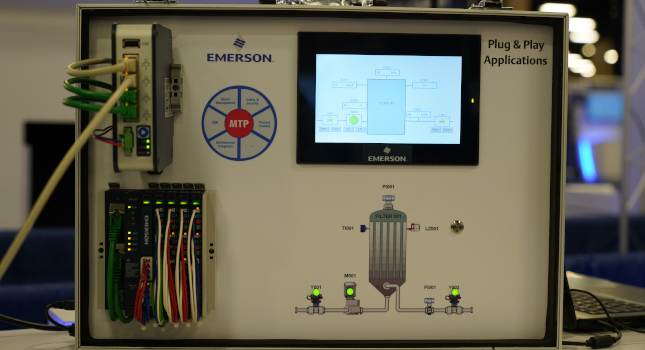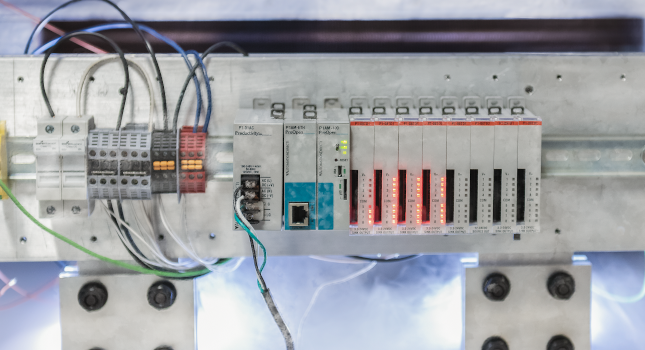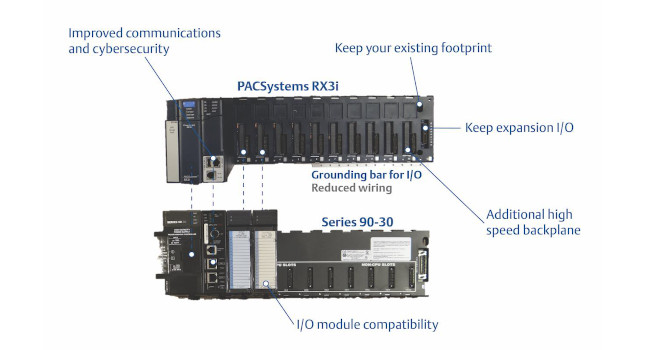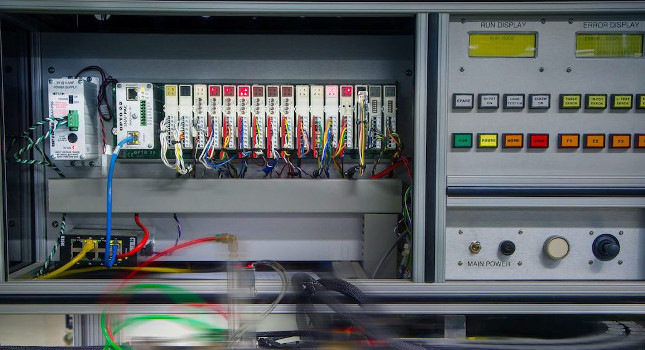Key concepts Compressed air filters must remove solids, aerosols, vapors, and gases. Contaminants come from intake air, the compressor, and the piping system.
Key concepts
- Compressed air filters must remove solids, aerosols, vapors, and gases.
- Contaminants come from intake air, the compressor, and the piping system.
- Filter elements are tailored to remove any combination of contaminants.
How successfully compressed air cleanliness requirements are met can have a dramatic impact on overall plant operating costs. Excessive contamination shortens the life of components and systems, adversely affects product quality, results in excessive maintenance requirements, and creates health and safety problems.
Almost all phases of plant operations depend on compressed air. These uses include breathing air, pneumatic conveying, food, chemical and pharmaceutical processing, pneumatic tools, spray painting, powder coating, packaging machines, and air for general plant and shop use. Each of these applications requires an airstream that has been filtered to control contaminants to an acceptable level.
Contaminants in the form of solid particulates, oil aerosols and vapor, water aerosols and vapor, or unwanted gases can be introduced from the plant environment and ingested by the compressor. When air leaves a compressor, it is anything but clean and dry. Most of the contaminants in compressed air are in the form of aerosols.
An aerosol is defined as a suspension of small solid or liquid particles in a gas. The particles are usually between 0.1—10 microns in diameter and can take the form of a visible mist or cloud. The human eye, usually able to see a particle about 40 microns in diameter, can see a collection of smaller particles in the form of a mist or a cloud, when the concentration is high enough.
The environment can have a tremendous impact on the overall contaminant level of the compressed air supply. Environmental factors include temperature, humidity, and contaminant level in the ambient air. Nonenvironmental factors include equipment utilization rate, contaminant ingression rate, and maintenance practices.
Effective compressed air filtration depends on a basic knowledge of how contaminants are captured and an understanding of how to select the most cost-effective type of filter housing, most effective element construction, and proper media type according to application requirements.
Sources of contaminants
Contaminants in compressed air systems have three possible sources: air drawn into the compressor, internal compressor mechanisms, and compressed air distribution system.
Compressors draw in virtually all particles, vapors, and gases in the air within a 6-ft radius of the inlet. Smaller particles, less than 10 microns in size, can be drawn in from a larger radius. The compressor inlet filter is designed to stop larger particles that could cause rapid wear of compressor parts. This design prevents excessively frequent replacements of the air intake filter element, but it does little to protect sensitive applications downstream of the compressor.
Most airborne particles smaller than 10 microns can enter the compressor. Approximately 80% of these particles by weight, or 99% by count, have diameters smaller than 2 microns. Any gases and vapors around the intake enter the compressor, and become part of the compressed air supply. These vapors could be combustion byproducts such as carbon dioxide, carbon monoxide, nitrous oxides, or sulfur dioxides.
Another factor affecting air contamination is that during compression the air volume is reduced. The result is an increase in the concentration of airborne particles in the compressed air. After compression, some of the most common airborne contaminants include dirt and pollen particles, iron oxide (rust) particles, microorganisms, unburned hydrocarbons, water aerosols and vapor, and oil aerosols and vapor.
Compressors work in such a way that the air neither gains nor loses heat content during compression. Called an adiabatic process, the gas volume is decreased while the heat content remains the same. As this happens, the temperature of the air rises. Many compressors have an aftercooler that reduces the outlet temperature of the compressed air, causing some of the water vapor to condense. The aftercooler is used to reduce total moisture content by lowering air temperature to cause condensation.
After passing through an aftercooler, the compressed air is usually saturated with water vapor (100% relative humidity). Water vapor is considered a contaminant. Many applications require dryer air, so an additional air dryer is usually located downstream of the aftercooler.
Another source of contaminants is the compressor itself. Since most compressors are oil lubricated, oil aerosols are forced into the compressed airstream. Although there are compressors designed as oil-free, imperfect seals allow oil vapor and aerosols to leak into the compression chamber from the oil sump. To cut down on the amount of oil aerosols in the compressed air, an oil/air separator is usually located after the compression chamber. This separator does not remove all of the oil.
Oil vapors and other vaporous hydrocarbons from the atmosphere can be drawn into the intake of an oil-free compressor, then concentrated and condensed in the compressed airstream to yield hydrocarbon aerosols. Although the concentration is lower than it would be in an oil-lubricated compressor, there is still oil in the compressed air.
Oil aerosols in compressed air made by oil-free compressors usually measure less than 0.1 ppm. A properly maintained lubricated screw compressor produces oil aerosol levels less than 5 ppm of oil in the airstream, but poorly maintained lubricated compressors can create oil concentrations as high as 100 ppm. A compressor that is producing 100 scfm of compressed air and 25 ppm of oil carryover injects 2-oz of oil into the air stream for every 10 hr of operation.
Why is oil in compressed air a problem? Many air driven tools, valves, and cylinders require oil lubrication. The oil aerosols from a compressor retain little value as a lubricant. Air dryers, particle filters, regulators, and other devices between the compressor and the air tools can become fouled if the oil concentration is high enough. Other applications, such as spray paint systems, air gauges, or breathing air applications, cannot tolerate any oil in the compressed air supply. Gaseous, unburned hydrocarbons from the atmosphere can be condensed during compression. These are all detrimental to seals used in pneumatic actuators, air tools, regulators, and other piping system components.
The air distribution system adds more contaminants to the airstream, including pipe scale, submicron iron oxide (rust) particles, particles shed from hoses and fittings, and desiccant dust.
Effects of contaminants
Airborne particles adhere to the surfaces of system components to create wear and interference. Several things happen when particles accumulate and begin to interact, including blocking clearances between moving parts, eroding surfaces and seals, leakage, lower efficiency in pneumatically operated equipment, reduced system performance, and increased energy consumption.
Excessive oil in pneumatic systems complicates the problems created by particles. Particles adhere to oil-coated surfaces, gumming parts and interfering with operation due to silting. This action accelerates the obstruction of pipes and passageways, which leads to increased pressure drop, higher energy consumption, and reduced performance.
Excessive water in compressed air lines can freeze in cold temperatures and shut down an entire system. Water can destroy the lubricating film on bearing surfaces, corrode component surfaces, and lead to interference and wear damage due to rust contamination in the airstream. Additional problems are created when gas phase contaminants, such as unburned hydrocarbons and combustion byproducts, enter the compressed air system. These contaminants can be condensed to create an oil aerosol that has the same effect as oil originating in the compressor. Even in minute levels, they can cause odor problems, which can render the air unsatisfactory for breathing purposes, conveying food stuffs, or blow molding food or pharmaceutical containers.
Filter media construction
Compressed air filters must deal with three major types of contaminants in the gas stream: solid particulates, water and oil aerosols, and vaporous hydrocarbons and other gases. Filtration media can be applied in order to control particulates only, to control particulates and liquid aerosols, or as an adsorbing media to capture vapors.
Filter elements designed for solid particle removal frequently use a single layer of pleated cellulose paper (Fig. 1). These media do not do well in removing liquid aerosols due to the relatively large diameter of the cellulose fibers. Without a drainage layer, any liquids that are collected by the filter element can easily be re-entrained into the airstream.
Many filter housings that contain particulate removal elements are designed with airflows from the outside of the filter element toward the inside. If liquid aerosols are coalesced in the filter medium, the liquids accumulate on the inside of the filter element and exit through the outlet.
Wrapped HEPA paper media are widely used for particle removal and coalescing in the same element. The glass paper used to make wrapped filter elements can be impregnated or saturated with a chemical binder to enhance filtration efficiency and increase the strength of the filter tube, or it may be binderless. Glass media without binders should be applied with caution. Prolonged exposure to water, oil, and varying flow conditions can weaken the filter media to the point of delamination, cracking, or disintegration.
As an alternative to the wrapped glass filter paper design, high efficiency coalescing filter elements can be vacuum formed in one operation (Fig. 2). The internal pore structure is graduated throughout the depth of the filter medium. There is more room for particulates to accumulate in the upstream layers of the glass fiber matrix, while the downstream layers enhance the coalescing removal efficiency of the filter element. As a result, extended filter element life, high oil aerosol and particulate removal efficiencies, and low differential pressure can be achieved at the same time.
Media thickness is a critical factor in coalescing filter design; the thicker the filter, the more likely a particle or a liquid aerosol will hit a fiber and stick to it. If the filter is too thick, differential pressure quickly increases to unacceptable levels. Typically, a media thickness of about 3/16 in. gives the best compromise between efficiency and differential pressure.
To aid in the draining away of the coalesced liquids and prevent re-entrainment, a layer of special purpose media, called the drain layer, is placed downstream of the coalescing media. This layer aids in efficient drainage of coalesced aerosols into the filter housing sump.
Filters that have been designed to control odors and other gas phase contaminants usually rely on granular adsorptive media, such as activated carbon or molecular sieves. The granular adsorbents may be found in beds, or impregnated in or on a carrier, such as polyester fabric; and then rolled or formed into cylindrical filter elements. Such media are used in a separate element and filter housings located downstream of the prefilter/coalescer. This arrangement is critical, because liquid aerosols must be prevented from reaching the absorptive media to prevent the rapid clogging of the pores.
Many air filter manufacturers offer media with a variety of removal or efficiency ratings. The selection of a media type or grade is usually based on a qualitative description of the application.
Removal efficiency
Selecting the right filter depends on knowing the removal efficiency of a compressed air filter in terms of its particle size rating. Filter test methods vary from manufacturer to manufacturer making filter ratings difficult to understand and compare. Even third party, independent lab testing performed on high efficiency filters can yield different results if a uniform test specification isn’t applied.
For a high-efficiency air filter element that has been tested by a number of different labs, the particle size removal rating could end up in the range of 0.01—1.0 micron. Because of the physics involved in particle filtration in air, a high efficiency filter can be more efficient at removing smaller, 0.01 micron particles than larger, 0.1 micron particles (Fig. 3).
The industry is beginning to embrace recognized standards for testing coalescing air filters. In addition, standards and test methods are available to assist the plant engineer in classifying the quality of the compressed air used throughout the plant (ISO 8573, for instance). Portable test instruments are making their way to the market, and there are engineering firms and consultants that can perform an air quality audit.
Coalescing filters
Coalescing is defined as the progressive agglomeration of small liquid aerosol particles into larger ones on the surface of individual filter fibers. Liquids are removed by gravity when the element becomes saturated with liquid aerosols that have coalesced together, and have been pushed through to the downstream side of the filter medium by the air flow passing through the filter element.
Gravitational force causes the large liquid droplets to fall into the sump area of the filter housing, where they can be drained off periodically (Fig. 4). Coalescing is a steady-state process that would go on indefinitely within a properly designed filter element, except for the accumulation of solid particulates that causes the differential pressure to build to unacceptable levels.
-Edited by Joseph L. Foszcz, Senior Editor, 630-320-7135, [email protected]
Typical airborne contaminants
ContaminantParticle size, microns
| Dirt and pollen particles | 0.01—20 |
| Microorganisms | &0.01—2 |
| Water | 0.05—10 |
| Oil from well-maintained compressor | 0.01—10 |
| Unburned hydrocarbons | Gas phase |
Media selection
Media gradeApplications
| 2 | Extremely fine particles and last trace aerosol coalescing; for lighter molecular weight gases and aerosols at higher pressures. Coalescing of electronic grade gases and critical purge gases. |
| 4 | Very high-efficiency coalescer; for medium elevated pressures between 150—500 psig or lighter weight aerosols. Protection of fluidic systems and critical modulating systems such as flow and temperature controllers. |
| 6 | General air coalescing applications when total removal of liquid aerosols and suspended fines is required in the pressure range of 60—150 psig. Protection of air gauging, air logic, modulating systems, critical air conveying, and most breathing systems. |
| 8 | Good air coalescing efficiency in combination with high flow rates and long element life. Protection of noncritical circuit components such as valves and cylinders. |
| 10 | Precoalescer or prefilter for Grade 6 to remove gross amounts of water and oil or tenacious aerosols difficult to drain. Upgrading existing particulate removal equipment to coalescing without increasing pressure drop. |
Five most common types of media used in high-efficiency filter
- Pleated cellulose paper
- Pleated glass fiber (high efficiency particulate air, HEPA) paper
- Wrapped HEPA paper (to increase the depth of the filter medium)
- Vacuum-formed micro-glass HEPA medium
- Various types of granular media to adsorb gas-phase contaminants and odors
Variables affecting filter performance
- Operating conditions (flow rate, pressure, temperature)
- Fluid properties
- Contaminant types and concentrations
- Particle and aerosol size ranges
Air filter/coalescing filter selection
To properly specify air filter/coalescing systems, knowledge of the air quality required at particular circuit locations or workstations, and the minimum filter performance required to attain that level of air quality, are important. The result of the specification process is the selection of specific filters, elements, and media types based on the requirements of the application.
- Identify potential filter locations in the system.
- Determine the gas flow rate, temperature, and pressure at those locations.
- Identify chemical, temperature, and other design compatibility issues associated with the filter housing, seal type, and media.
- Determine maximum acceptable particulate (largest particle size and concentration), water (both liquid and vaporous), and oil (both liquid and vaporous) concentrations downstream of each potential filter location.
- Estimate upstream concentrations.
- Calculate the removal efficiency needed for the filter media.
- Select the filter element type and media for each location.
- Select the filter housing style, size, and options that meet the requirements of the application (system pressure and flow rate, material compatibility, pressure drop requirements, maintenance concerns, etc.).
- Examine the cost tradeoffs for various types of filter housings and media types, and balance them against operating and maintenance costs associated with element replacement and general air system maintenance.
Maintenance requirements
The best filters will do little good if they are not properly maintained. There are several practices to maintain compressed air quality.
Tighten and leak test all connections with soapy water, or a commercially available leak indicating solution.
Replace worn seals and hoses.
Practice good housekeeping when a system is opened for maintenance to prevent contamination by replacement components.
Inspect filter indicators to ensure they are operating properly.
Drain the filter sump regularly to prevent oil and water rom reentering the airstream. Specify filter housings with auto drains, and test them periodically for proper operation.
If drain lines are attached to filter housings, each should be separate and not manifolded together. Due to differential pressure, unfiltered air can bypass the filter element through the drain connections in multivessel filtration systems if the drain connections are tied together.
More info
The author is available to answer questions on compressed air filtration. He can be reached at 248-628-6400.
Filtration Technology, 2nd Edition, (Bulletin 0247-B1) is a 250-p illustrated reference textbook on typical filtration systems. Contact the Parker Filtration Group, 216-896-2350



